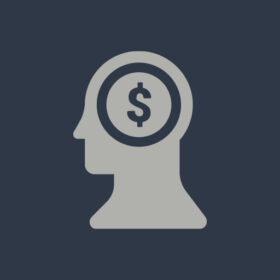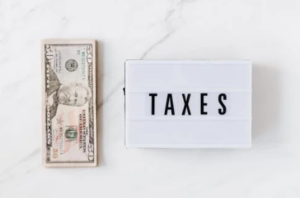When will a Bear-Market Rally form a New Bull?
The market will turn around, they always do, some would argue that they are built to expand. Below are some of the elements we look for to determine if a market is turning around, or if we are looking at another Bear Rally.
Rallies will get longer in time, and less dramatic
The drama of a bear market is exciting and news outlets love it. The markets and the news gravitate towards those chaotic headlines. This was easily seen when during the last Bull market news outlets ran headlines and talking heads marking the top, declaring market “warnings” and finding economists that would deride the market. It’s exciting and captures eyeballs…the turnaround won’t be all that exciting.
There won’t be a day of major capitulation, followed by a counter move to the upside. It will come with steady, long-term grinds up. It will come with the whole market moving up in a coordinated and cooperative way. Markets with a broad influence from several sectors that grind out small moves over a long time are far more attractive to investors and generate a virtuous cycle.
The Bear Rallies of 2022 so far…
Days | Percent | Daily % | |
Bear Rally (1) | 9 | 6.1% | 0.67% |
Bear Rally (2) | 11 | 9.9% | 0.90% |
Bear Rally (3) | 12 | 6.2% | .51% |
Bear Rally (4) | 41 | 14.3% | .34% |
Bear Rally (5) | ? | ? | ? |
The median gain of the largest rallies that have occurred within bear markets is 11.5% over 39 days. Typically, the rallies on the low side of the median, occur early in the bear market, while those that exist on the high side are in the more mature parts of the bear market.
Additionally, there are far more rallies below the mean, than above. Meaning that we will see more false rallies that are short and volatile and only a few long-term sustainable rallies that are long with small moves.
The longer these rallies get, and the smaller the moves, the more likely an “all clear” can be declared.
There will be broad support
Investment professionals look for certain technical signals to be in place before confirming a reversal is underway. There are several measuring sticks that look for broad support in trading. The advance-decline line, trades above the moving average, and the McClellanOscillator are examples of technical measurements of the breath the market is moving, for how many stocks and how many sectors are participating in the move.
“Breadth thrust” is the term for these signals, and a leading indicator if a market is transitioning from a Bear to a Bull. The duration of the move and the price gains associated with it are also important. The indicators that most reliably confirm that there is a shift into a new bull market are:
Flows into equities and out of cash in important ETFs
There are “traders” ETFs, and there are “investors” ETFs, and knowing the difference is important.
If dollars are flowing into leveraged high volatility trading products it is a signal that the market is trading for a short-term and volatile swing (read a bear rally). If money flows are going into long-term holds that cover the whole of a market in balanced and long-term ways, it’s a signal that the investment appetite is changing to a more long-term outlook and investors are building a new core of their profile. Outsized flows into SPY, QQQ, or VOO are a good sign that the broad market is healthy and investors are willing to hold the whole of the market.
The current market is witnessing the worst first half for stocks and bonds in 50 years, the highest inflation in 40 years, and an endless barrage of bad economic data. So seeing a broad, coordinated shift from cash and cash-like funds, into broad equity will be a good sign in a change from “risk off” to diversified “risk on”.
Earrings being “better than expected” at more and more companies
There is an entire industry reporting on “beats and misses” on companies’ earnings. While individual stock stories are exciting and reported on the news, the sizes and frequency of misses vs. beats are often overlooked.
Wall Street pros are at odds as to whether we are at an inflection point in the markets. That inflection point will be confirmed when estimates, which are increasingly bleak, are replaced by corporate earnings that are better than expected. This will take several quarters and is a laggard indicator. But is the most reliable measurement to say the companies that make up the market are in a healthy and expansionary space. This seachange in earnings will likely happen 2-3 quarters after the market has “bottomed”, so while not a great trading and timing indicator, it is a very good indicator of changes in the macroenvironment.
Company earnings are a more reliable indicator of investment health, this is not a shocking revelation. But the frequency and diversity by which these companies manage inflation pressures, and sell their product to the marketplace is a tide that raises all boats and encourages board participation in rising stock prices.
What past Bear-Markets tell us about future ones
A peek at the history of bear markets would suggest that the “naysayers” are on the right side of history, at least for a time. In the 30 different bear markets that have occurred since 1929, the stock market registered an average decline of 29.7%. These downturns lasted have lasted for an average of 341 days. 86% of the bear markets last less than 20 months, and few last longer than one year.
Right now, according to traditional economic interpretations, the U.S. could well be in a recession. We have seen two-quarters of GDP contraction. The Commerce Department reported that gross domestic product shrank by 0.9% in the second quarter of, after contracting 1.6% in the first quarter of this year. That’s it, that is the traditional definition of a recession, and the Bear market has priced that move in as a result.
So why the “is this a recession this time” talk? Well, there has been a rash of different pro-growth data that has persisted. Wages have grown, unemployment has stayed low, and demand for freight, semiconductors, and component raw materials has been high. These would indicate that demand is still healthy. How can you have a recession with such a demand for materials?
If the Fed can achieve the delicate balance of taming inflation by slowing the economy without tipping the country into a recession, this bear market could already be long in the tooth. If we count the correction from the November high, we will be entering the second year of the bear market next month. The one-year mark for this Bear market would come in March of 2023 (just around the corner by economic standards – meaning we are currently in the 3rd or 4th inning of the Bear Market with the most violent changes in pricing behind us. This would be an “un-recessionary bear market”
If the Fed fails in a “soft landing” in the first quarter of next year more reliable indicators of recession (falling commodity prices, major spikes in unemployment, and weakening manufacturing outlooks) are on the rise before the Fed quells inflation then we can see a more elongated bear market and a full-blown recession.



